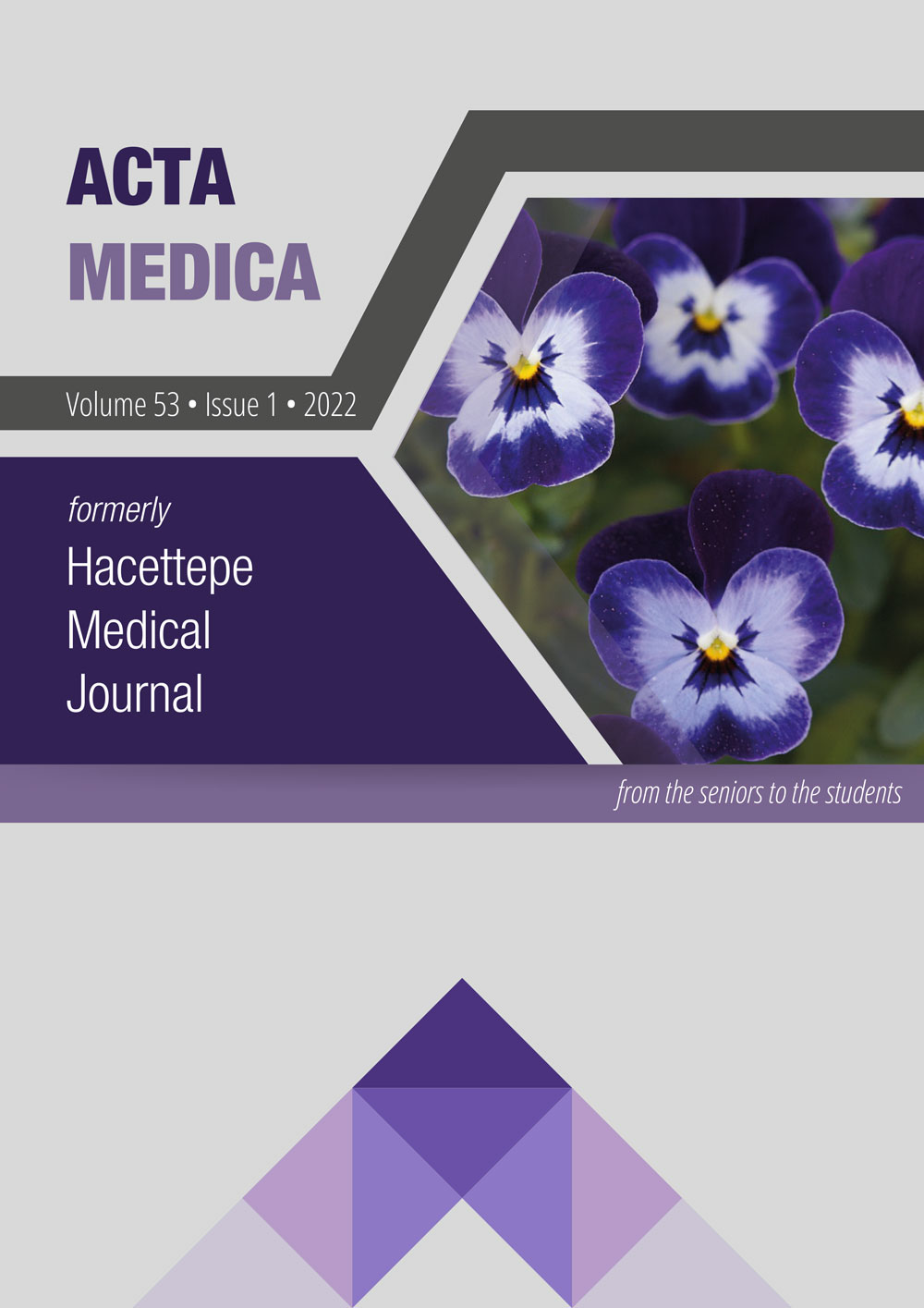The Factors Related to the 6 Minute Walk Test: The Experience of a Referral Lung Transplantation Center
DOI:
https://doi.org/10.32552/2022.ActaMedica.692Abstract
Objectives: The 6-minute-walk test is a practical and widely used test, which indicates the exercise capacity in patients with a severe pulmonary disease. The study aims to investigate the related factors with the 6-minute-walk test in lung transplantation candidates.
Materials and Method: The data were collected retrospectively from 349 patients, between January 2012 and September 2020. The patients were grouped according to their underlying lung disease as obstructive lung diseases, interstitial lung diseases, and infective lung diseases. The data collected included patient demographics, gender, body mass index, artery blood gas, the results of the respiratory function test, six-minute walk test, long-term oxygen therapy, and the need for non-invasive mechanical ventilation [such as group 1 (6MWD<200) and group 2(6MWD≥200)]. All of the collected data were analyzed and compared between the groups.
Results: Overall, 349 patients were included in the study, and there were 123 females and 226 males (35.2% and 64.8% respectively) with a mean age of 46.92 ± 14.1 years. Their mean body mass index was 23.58 ± 12.52 kg/m2, the median FEV1(%) was 35.3 (33.4-37.2), the median six-minute walk distance was 222 m (125-335 m), and the mean PaO2/FiO2 (P/F) was 250.32% ± 74.81, the mean PCO2 was 45.71 mmHg ± 11.97. Furthermore, the patients using long-term oxygen therapy were (n=274, 78.5%) and non-invasive mechanical ventilation were (n=125, 35.8%). The mortality status, P/F, long-term oxygen therapy usage, and non-invasive mechanical ventilation usage were different between Group 1 and Group 2 (p=0.001, p=0.001, p<0.001, and p<0.001, respectively). There was no difference between the groups in patients with and without IPF between underlying diseases. The 6-minute walk test was found to have moderate correlation with FEV1 and P/F; and a negative correlation with age and PCO2 (p<0.01, r=0.33.8, p<0.001, r= 38.1 and p=0.17, r=12,7, p<0.001, r=-0.30.6, respectively). There was no correlation between P/F, FEV1, and body mass index; and also, between PCO2, age, and body mass index. Age had a weak correlation with FEV1(p<0.001, r=19.3). There was no correlation between the age and 6MWD, as well as P/F, PCO2, and the body mass index. The factors affecting survival in multivariate analysis were investigated by using the Cox regression model. It was observed that gender (OR, 0.001; 95% CI, 0.246-0.716; p=0.42), FEV1(OR, 1.02; 95% CI, 1.00-1.04; p<0.001), P/F (OR, 1.00; 95% CI, 1.00-1.01; p<0.001), and LTOT (OR, 9.83; 95% CI, 3.70-26.14; p<0.001) were independent factors associated with 6MWD<200 m.
Conclusion: The 6-minute walk test is associated with mortality, gender, poor oxygenation, and with the utilization of domiciliary non-invasive mechanical ventilation or long-term oxygen therapy. Furthermore, it is an independent risk factor for mortality in lung transplant candidates and in providing a valuable method for the management of patients.


